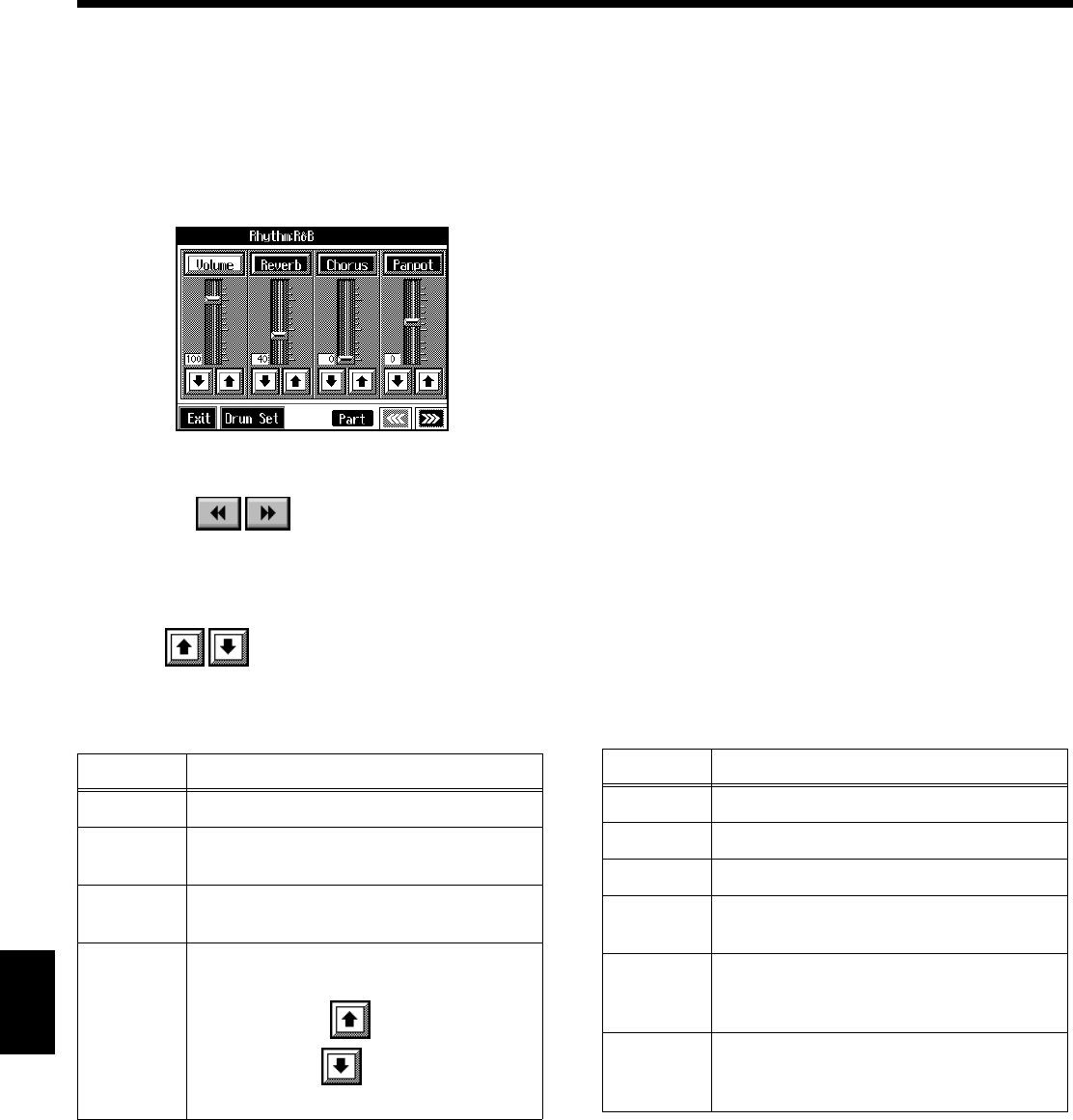
118
Creating Music Styles
❍ Editing the volume and effect settings for
each Part
Displaying the Part settings screen
1. At the Style Composer screen, touch <Part>.
A screen like the one shown below appears.
fig.d-scomp-part.eps_50
Modifying the settings of each part
2. Touch the to select the part with the
settings to be changed.
The part name and Tone name are indicated in the upper
part of the screen.
3. Touch for each parameter to change the value.
You can also change the values by touching each
parameter name and then using the dial.
Finishing the settings
4. Touch <Exit>.
The Style Composer screen appears.
■ Creating a Style from a Song
You Composed Yourself (Style
Converter)
You can take a song you’ve composed yourself and extract
the portions you need to create your own original Style.
When you’re composing a song, there’s no need to specify all
the chords. You can specify some of the chords, and the
KR105 automatically chooses the other chords and arranges
the style. This function is called the “Style Converter.”
Style Converter features an “Auto mode” that allows you to
easily create Styles from songs with a single chord, and a
“Manual mode,” in which you create Styles from songs with
three kinds of chords–major, minor, and seventh chords.
When creating a song in order to create an music style, it’s
good practice to consider the arrangement of the music style.
Style Arrangements
A Music Style is made up of five performance parts:
“Rhythm,” “Bass,” “Accompaniment 1,” “Accompaniment
2” and “Accompaniment 3.”
A song progresses in predictable a sequence, such as intro,
melody A, melody B, bridge and ending.
With the KR105, such changes in songs are allocated to the
following six performance states. We call these six parts of a
song “Divisions.”
You can make a song more lively or more restrained by
increasing or reducing played parts by Divisions. You can
also modify a song by changing the Tone of the parts in the
Divisions.
Display Explanation
Volume Adjusts the volume.
Reverb
Adjusts the amount of reverb effect applied
to the sound.
Chorus
Adjusts the amount of chorus effect applied
to the sound.
Panpot
Changes the left-right direction from which
the sound appears to come.
When you touch , the sound moves to
the right; touch to move the sound to
the left.
Division Performance division
Intro The intro is played at the start of a song.
Ending This is played at the end of a song.
Original This is a basic accompaniment pattern.
Variation
This is a developmental accompaniment
pattern. It is a variation on an Original.
Fill-In To
Variation
This is a one-measure phrase inserted at a
juncture where the mood changes. It is used
to make a song more lively.
Fill-In To
Original
This is a one-measure phrase inserted at a
juncture where the mood changes. It is used
to make a song more sedate.
KR105.book Page 118 Tuesday, June 7, 2005 5:25 PM


















